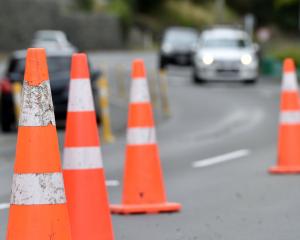With vision, skilful planning and long-term internal investment, New Zealand has the opportunity of becoming one of the first countries in the world to achieve a sustainable renewable electricity supply. There are some things which need planning and go a long way past the three years of a government's life.
Market forces will do little for the long-term good of New Zealand in the initial supply of electricity. They may have a place in the final distribution.
Imagine a national roading system run by six companies, each trying to get the toll charges for the main river bridges and highways or six competing police companies enforcing the law nationwide. That is a reasonable analogy of the ultimate result of the market "farce" imposed by Max Bradford and being completed in our electricity system.
Our goal needs to be a completely renewable system, but we must always have a reliable and sustainable system of generation and distribution that is fair to the domestic user and is helpful and encouraging to industrial and manufacturing sectors which supply our local and export markets.
Initially, a lot of profits will have to be used on research and the development of expensive schemes that will ensure our renewable future.
This is better than the money going out of the country each year, never to be seen again.
We did have a system once called the New Zealand Electricity Department which, along with the co-operation of others such as the Ministry of Works, planned and organised the building and operating of power stations plus the main distribution system and the Cook Strait cable. While this was probably a very top-heavy department staffwise, its planning kept us ahead of electricity needs and some of its engineers were leaders in hydro-electricity development and much sought after on the world scene.
Mr Bradford put an end to all that, and we now have a hotchpotch of small SOEs and private companies running various power plants and a New Zealand Electricity Authority that in fact has very little authority. We have an infrastructure that is falling apart.
(Power lines to Auckland and the Cook Strait cable). However, we have a lot of good existing power stations which stand out like cash cows. That is why so many people will want to buy them, milk them for a short time and then sell them off overseas at a good profit.
It would be good to be able to buy the two private companies back. However, that is not practical or necessary. Both Contact and TrustPower do a pretty good job and their profitable future will be assured if they become part of the planning for our future as partners and contractors to the giant SOE which would plan and control existing and future power generation and distribution in New Zealand.
We have most of the sources needed for a renewable and sustainable energy supply: Water (rivers, lakes and dams - most dams have a small holding capacity for a few hours while the endless opportunities of wind turbines take over). We have a lot of under-developed geothermal resources.
Endless possibilities with solar energy as the technology gets simpler.
Numerous sites for tidal energy. Coal seam gas ... The list goes on, but it all needs planning.
Under its original CEO (Keith Turner) and its present management, Meridian is a fine example of an SOE trying to develop our natural resources, giving full consideration to all the issues involved, particularly the effects on the lives of people. They have recently experienced the latest absurdity, being forced to sell Tekapo A & B stations to Genesis to give them some hydro power to balance their generation. (The very thing a national system would be doing.)
Meridian also controls Manapouri which has considerable water storage and many opportunities for wind generation. It could, with suitable transmission lines and a functional Cook Strait cable, play a bit part in a New Zealand system even with the transmission losses.
With the New Zealand Aluminium smelter being for sale, anything could happen. The smelter does not normally need all the power from Manapouri and with the use of wind turbines could use even less.
If relieved of Mr Bradford's market "farce", we already have the people in New Zealand capable of running one giant SOE that would operate and plan for a sustainable electrical system and ensure we had a secure future supply of energy in our economy.
Selling our assets is bad enough, but losing our ability to plan and get the best for our future is a disaster.
I have always admired politicians who can change their minds if presented with a new and sensible alternative.
Energy, whether it is human, solid, liquid or electrical, is what sustains the human race in this overcrowded world.
• Lex Smith, of Dunedin, is a retired engineer.











